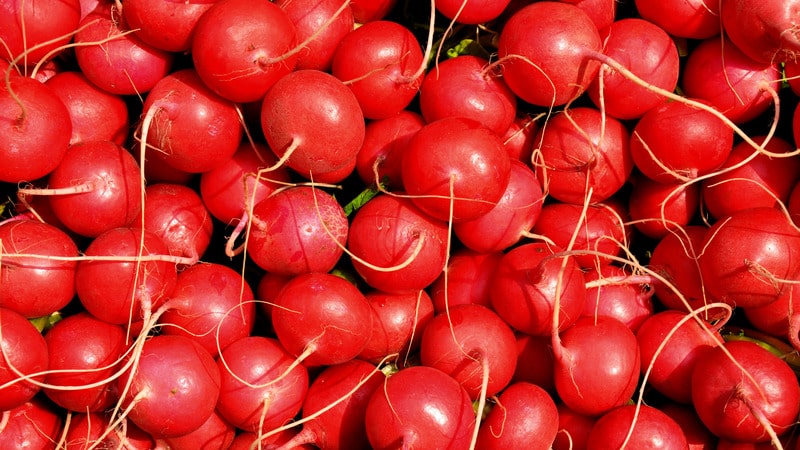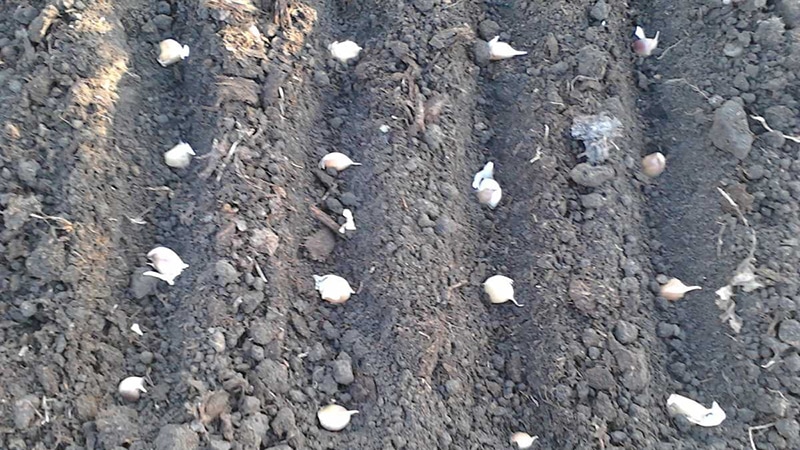When to plant radishes in the summer for the second time and how to do it correctly
Radish - the first vegetable that gardeners plant in the ground. Early varieties are planted immediately after the snow has melted. This crop can be grown all spring until the end of May, sown in the beds every 7-10 days. After this, you need to take a break and resume planting in the second half of summer. How to re-harvest, read our article.
Is it possible to plant radishes a second time in the summer?
In the southern regions of Russia, work begins in March. In Siberia and the Urals - in early May. The radish harvest is harvested a month after germination. After the main harvest is harvested, the bed is cleared of remaining plants and prepared for re-sowing.
Radishes love cool weather and short daylight hours. When the day length increases to 15 hours, the plant begins to reproduce. If the plant begins to bloom, the roots grow bitter and small. Therefore, those who would like to get a tasty radish harvest do not plant them from the end of May until the second half of July.

To enjoy the taste of this vegetable all summer, it can be planted in open ground in June, but observing the following conditions:
- the beds are covered with opaque material from 19 to 7 hours 2-3 weeks from the emergence of seedlings;
- water once a day;
- choose varieties, less susceptible to the formation of arrows.
If the conditions cannot be created, radishes are replanted when the day begins to wane - in the second half of summer.
When to plant radishes a second time in summer
Radishes can be replanted from late July to October. In summer, it is better to place the beds in the shade.Areas under onions, garlic, early carrots and potatoes are suitable for sowing radishes. You cannot alternate radishes with plants from the cruciferous family (cabbage, turnips, turnips). Before sowing, the soil is fertilized with a glass of wood ash and a bucket of humus or compost per 1 square meter. m. Also, during watering, you can feed the soil with ammonium nitrate at the rate of 10-15 g per 10 square meters. m.
You can count on the second harvest 20-30 days after planting - the exact timing depends on the variety. Caring for summer crops is not much different from spring. When cruciferous flea beetles appear, the seedlings and soil are dusted with ash or dry mustard. Summer radishes are watered less frequently as the days become colder and it rains more often.

Important! It is necessary to regularly pull out weeds, loosen row spacing and thin out radishes to a distance of 5 cm between root crops, when 2-3 true leaves appear.
Favorable days according to the lunar calendar
There are 6 days in the lunar calendar when you cannot cultivate the land - these are the new moon, the full moon, the day before and the day after these days. During the waxing moon, which is favorable for the growth of the above-ground parts of plants, fertilizers are applied and the beds are weeded. The period of the waning moon promotes the growth of the underground part of plants.
For root vegetables, it is considered lucky when the moon is in the sign of Pisces, Taurus, Cancer, Libra, Scorpio, Capricorn. Aries, Aquarius, Gemini, Sagittarius, Leo, Virgo are not suitable for root vegetables. Planted at this time seeds They take a long time to germinate and give a poor harvest.
In 2019, favorable days in July are 25-31, in September - 17-19, 26, 27, 30. Radishes planted in the fall produce a long-lasting harvest. After harvesting, the root crops are sprinkled with sand and stored in the cellar. Storage temperature – 2-5 °C.
Which radish varieties are suitable for the second planting?

The following varieties are selected for replanting:
- Octave – a round, mid-season variety, has delicate pulp with an oily aftertaste.
- Red giant – a long-term storage variety, root vegetables ripen in 30-40 days, the flesh is white-pink, dense, pleasant to the taste.
- Red giant – late-ripening variety with long-term storage. The root vegetables are cylindrical in shape, the pulp is juicy, sweet-spicy in taste.
- Ilke – mid-season variety, ripens in 27-29 days. The root crop is round, the pulp is juicy, white. Keeps fresh for a long time.
- Sachs – an early-ripening variety, rounded root vegetables with delicate, mildly pungent pulp.
Features of seed preparation and sowing

Before sowing, it is important to prepare high-quality seed material:
- sort through, separate the largest seeds;
- keep the seeds in a damp cloth for 24 hours;
- immediately before sowing, soak in hot water;
- after soaking, treat with a growth stimulator (Vympel or Oracle preparations) and dry.
Late varieties of radishes with large root crops are planted in rows at a distance of 10-25 cm. The seeds are buried no more than 2 cm, otherwise they will take a long time to germinate, the harvest will appear later, and in late summer and autumn this is undesirable due to lower temperatures. Before sowing, the bottom of the seed grooves is moistened with water, since the sown bed is not watered. If you water the bed after sowing, a crust will form; loosening it can damage the emerging seedlings.

Read also:
Top 8 best pickled radish recipes for the winter.
Preparing radishes for the winter: simple and tasty recipes for healthy snacks.
What vitamins are in radishes and how are they good for health?
Conclusion
It is quite possible to grow several crops of radishes over the summer.And many gardeners, especially in the south of Russia, plant radishes from March to October, taking a break in June and the first half of July. In summer, radishes begin to be planted in the second half of July or early August. For the second planting, special varieties of seeds are selected.